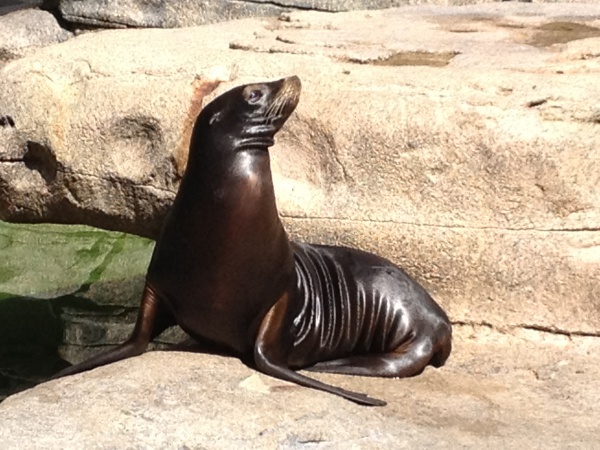Facts About California sea lion
The California sea lion is a coastal eared seal indigenous to the western shores of North America, ranging from southeast Alaska to central Mexico, including the Gulf of California. As one of the six sea lion species, they are noted for their playful nature and agility both in water and on land.
Male and female California sea lions are easily distinguishable. Males are noticeably larger, with a thicker neck and a prominent bump on their heads known as a sagittal crest. These sea lions prefer sandy or rocky beaches but can also often be seen lounging around marinas and wharves.
Their diet is quite varied, consisting mainly of fish and squid. However, they must be vigilant of predators such as killer whales and great white sharks.
The breeding season extends from May to August. During this period, males establish territories to attract females. Interestingly, females can move freely between these territories. They nurse their pups between foraging trips. Communication among sea lions is fascinating; they use barks and specific calls between mothers and pups to maintain contact.
Outside of the breeding season, California sea lions spend most of their time at sea but come ashore to molt. Their intelligence and trainability make them favored performers in zoos, circuses, and oceanariums. The U.S. Navy even trains them for specialized military tasks.
Although the species is currently listed as Least Concern by the IUCN, they face several threats. These include conflicts with fishermen, poaching, entanglement in man-made debris, and exposure to pollutants. The Marine Mammal Protection Act in the United States provides some safeguards, making it illegal to hunt, kill, capture, or harass these animals.
Nevertheless, challenges persist. For instance, sea lions often clash with fishermen over endangered salmon, leading to occasional lethal removals. Habitat disturbances, such as docks tipping over under the weight of resting sea lions, also pose problems.
Recent events have highlighted the struggles of California sea lions. In 2015, many sea lion pups were found malnourished, prompting state governments in Oregon and Washington to carefully manage the population, sometimes resorting to extreme measures.
Despite these challenges, ongoing efforts aim to protect and manage California sea lions, ensuring their survival and well-being for future generations.

 Panama
Panama